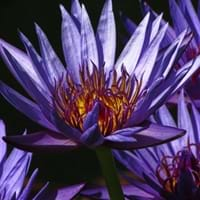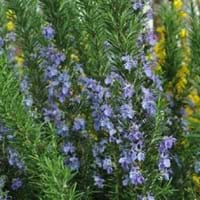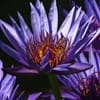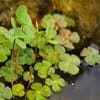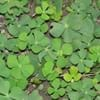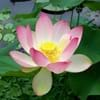Life Span
Perennial
Perennial
Origin
Eastern Africa
Southern Europe, Mediterranean
Types
Not Available
Arp Rosemary, Gorizia Rosemary, Lockwood de Forest Rosemary, Salem Rosemary
Number of Varieties
Not Available
Habitat
Lowland, Ponds
Dry areas, Open scrub
USDA Hardiness Zone
10-11
8-11
AHS Heat Zone
Not Available
12-8
Sunset Zone
Not Available
H1, H2, 4, 5, 6, 7, 8, 9, 10, 11, 12, 13, 14, 15, 16, 17, 18, 19, 20, 21, 22, 23, 24
Habit
Oval or Rounded
Oval or Rounded
Flower Color
Blue, Dark Blue, Yellow, Yellow green
Blue Violet
Flower Color Modifier
Bicolor
Bicolor
Fruit Color
Light Green
Not Available
Leaf Color in Spring
Dark Green, Green
Sea Green
Leaf Color in Summer
Dark Green
Sea Green
Leaf Color in Fall
Green, Orange, Yellow
Sea Green
Leaf Color in Winter
Green
Light Green
Leaf Shape
Broadly Ovate
Needle like
Plant Season
Spring, Summer, Fall, Winter
Spring, Summer, Fall, Winter
Sunlight
Full Sun, Partial Sun
Full Sun
Type of Soil
Clay, Loam
Loam, Sand
The pH of Soil
Acidic, Neutral, Alkaline
Neutral, Alkaline
Soil Drainage
Average
Well drained
Bloom Time
Early Spring
Early Spring, Spring, Late Spring, Late Winter
Tolerances
Pollution, Drought, Soil Compaction
Drought
Where to Plant?
In Water, Pot
Container, Ground, Pot
How to Plant?
Corms or bulbs, From Rhizomes, Seedlings
Seedlings, Stem Planting
Plant Maintenance
Medium
Medium
Watering Requirements
Plant grows in water
Do not water frequently, Does not require lot of watering, It cannot sustain wet-feet, Never Over-water, Requires watering in the growing season, Water when soil is dry, when new, water every week
In Summer
Lots of watering
Lots of watering
In Spring
Moderate
Moderate
In Winter
Average Water
Average Water
Soil pH
Acidic, Neutral, Alkaline
Neutral, Alkaline
Soil Type
Clay, Loam
Loam, Sand
Soil Drainage Capacity
Average
Well drained
Sun Exposure
Full Sun, Partial Sun
Full Sun
Pruning
Remove damaged leaves, Remove dead branches, Remove dead leaves
Prune for shortening long shoots, Prune if you want to improve plant shape, Prune regularly, Prune to control growth, Requires extensive pruning
Fertilizers
All-Purpose Liquid Fertilizer
All-Purpose Liquid Fertilizer
Pests and Diseases
Lily Beetle, Red blotch, Sap-Sucking Insects
Mealybugs, Powdery mildew, Root rot, Scale, Spider mites, Whiteflies
Plant Tolerance
Drought
Drought
Flower Petal Number
Single
Single
Fragrant Bark/Stem
No
Yes
Foliage Texture
Not Available
Fine
Foliage Sheen
Glossy
Matte
Attracts
Aphids, White bugs
Bees
Allergy
Diabetes, Nausea
Skin rash, Vomiting
Aesthetic Uses
Beautification, Hanging Basket, Showy Purposes
Beautification, Showy Purposes
Beauty Benefits
Not Available
Not Available
Environmental Uses
Air purification
Air purification
Medicinal Uses
Anxiety, Combats Stress, Diarrhea, Improve circulation, increase memory, Soothing and relieving pain
Antioxidants, Cough, Gastrointestinal disorders, Heartburn, High blood pressure, Indigestion
Part of Plant Used
Leaves, Root, Stem
Flowers, Leaves
Other Uses
Oil is used in perfume, soaps, creams, etc., Traditional medicine, Used as Ornamental plant, Used for its medicinal properties
Air freshner, Oil is used for aromatherapy, Oil is used in perfume, soaps, creams, etc., Showy Purposes, Used as a spice
Used As Indoor Plant
Yes
Sometimes
Used As Outdoor Plant
Yes
Yes
Garden Design
Bog Garden, Water Gardens
Container, Edible, Hedges, Herb / Vegetable, Mixed Border, Topiary / Bonsai / Espalier
Botanical Name
Nymphaea caerulea
ROSMARINUS officinalis 'Tuscan Blue'
Common Name
Blue Lotus, Blue Egyptian lotus
Rosemary, Tuscan Blue Rosemary
In Hindi
ब्लू लोटस
टस्कन ब्लू दौनी
In German
Blue Lotus
Tuscan Blau Rosmarin
In French
Blue Lotus
Toscane Bleu Rosemary
In Spanish
Blue Lotus
Toscana azul Romero
In Greek
Blue Lotus
Τοσκάνης Μπλε Rosemary
In Portuguese
Blue Lotus
Tuscan Azul Rosemary
In Polish
Blue Lotus
Toskańskie Niebieski Rosemary
In Latin
Blue Lotus
Tusci Rosemary blue
Phylum
Magnoliophyta
Magnoliophyta
Class
Magnoliopsida
Magnoliopsida
Order
Nymphaeales
Lamiales
Family
Nymphaeaceae
Lamiaceae
Genus
Nymphaea
Rosmarinus
Clade
Angiosperms
Not Available
Tribe
Not Available
Not Available
Subfamily
Not Available
Not Available
Number of Species
Not Available
Importance of Blue Lotus and Tuscan Blue Rosemary
Want to have the most appropriate plant for your garden? You might want to know the importance of Blue Lotus and Tuscan Blue Rosemary. Basically, these two plants vary in many aspects. Compare Blue Lotus and Tuscan Blue Rosemary as they differ in many characteristics such as their life, care, benefits, facts, etc. Every gardener must at least have the slightest clue about the plants he wants to plant in his garden. Compare their benefits, which differ in many ways like facts and uses. The medicinal use of Blue Lotus is Anxiety, Combats Stress, Diarrhea, Improve circulation, increase memory and Soothing and relieving pain whereas of Tuscan Blue Rosemary is Antioxidants, Cough, Gastrointestinal disorders, Heartburn, High blood pressure and Indigestion. Blue Lotus has beauty benefits as follows: Not Available while Tuscan Blue Rosemary has beauty benefits as follows: Not Available.
Compare Facts of Blue Lotus vs Tuscan Blue Rosemary
How to choose the best garden plant for your garden depending upon its facts? Here garden plant comparison will help you to solve this query. Compare the facts of Blue Lotus vs Tuscan Blue Rosemary and know which one to choose. As garden plants have benefits and other uses, allergy is also a major drawback of plants for some people. Allergic reactions of Blue Lotus are Diabetes and Nausea whereas of Tuscan Blue Rosemary have Skin rash and Vomiting respectively. Having a fruit bearing plant in your garden can be a plus point of your garden. Blue Lotus has no showy fruits and Tuscan Blue Rosemary has no showy fruits. Also Blue Lotus is not flowering and Tuscan Blue Rosemary is not flowering . You can compare Blue Lotus and Tuscan Blue Rosemary facts and facts of other plants too.
